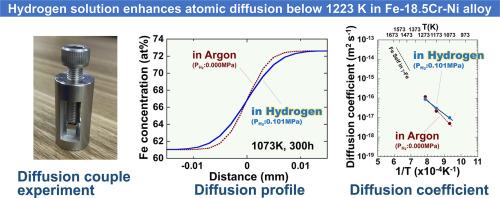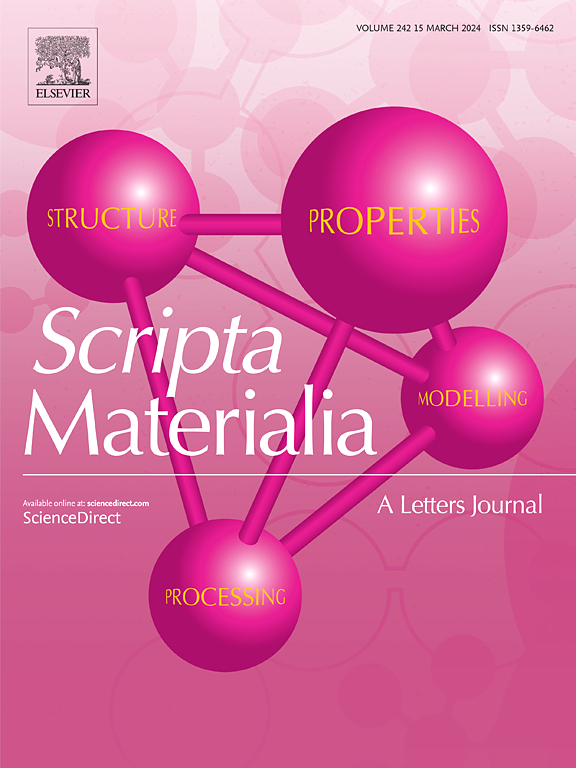用扩散偶实验测量Fe-18.5Cr-10Ni合金在氢气环境中的扩散系数
IF 5.6
2区 材料科学
Q2 MATERIALS SCIENCE, MULTIDISCIPLINARY
引用次数: 0
摘要
为了阐明304型奥氏体不锈钢在氢环境中蠕变强度降低的机理,采用扩散偶实验测量了化学成分与304型相似的Fe-18.5Cr-10Ni(质量%)合金的扩散系数。实验在常压氩气和氢气中进行,温度范围从1073 K到1273 K。发现氢的存在降低了晶格扩散的活化能,从而增加了1223 K以下的扩散系数。外推到873 K时,表明在纯氢中的扩散系数是在氩中的8.3倍。值得注意的是,这一比率与先前报道的在相同温度下最小蠕变率增加8.1倍的结果很好地吻合。这些发现提供了强有力的证据,证明氢增强扩散促进位错攀登,从而加快蠕变速率,降低蠕变强度。本文章由计算机程序翻译,如有差异,请以英文原文为准。

Measurement of the diffusion coefficient in Fe-18.5Cr-10Ni alloy through diffusion couple experiments in a hydrogen environment
To elucidate the mechanism underlying the reduction in creep strength of Type 304 austenitic stainless steel in hydrogen environments, diffusion couple experiments were conducted to measure the diffusion coefficient of an Fe-18.5Cr-10Ni (mass%) alloy with a chemical composition similar to that of Type 304. The experiments were performed in atmospheric pressure argon and hydrogen at temperatures ranging from 1073 K to 1273 K. The presence of hydrogen was found to lower the activation energy for lattice diffusion, thereby increasing the diffusion coefficient at temperatures below 1223 K. Extrapolation to 873 K suggests that the diffusion coefficient in pure hydrogen was 8.3 times greater than in argon. Notably, this ratio aligns well with the previously reported increase in minimum creep rate by a factor of 8.1 at the same temperature. These findings provide strong evidence that hydrogen-enhanced diffusion promotes dislocation climb, thereby accelerating creep rate and reducing creep strength.
求助全文
通过发布文献求助,成功后即可免费获取论文全文。
去求助
来源期刊

Scripta Materialia
工程技术-材料科学:综合
CiteScore
11.40
自引率
5.00%
发文量
581
审稿时长
34 days
期刊介绍:
Scripta Materialia is a LETTERS journal of Acta Materialia, providing a forum for the rapid publication of short communications on the relationship between the structure and the properties of inorganic materials. The emphasis is on originality rather than incremental research. Short reports on the development of materials with novel or substantially improved properties are also welcomed. Emphasis is on either the functional or mechanical behavior of metals, ceramics and semiconductors at all length scales.
 求助内容:
求助内容: 应助结果提醒方式:
应助结果提醒方式:


